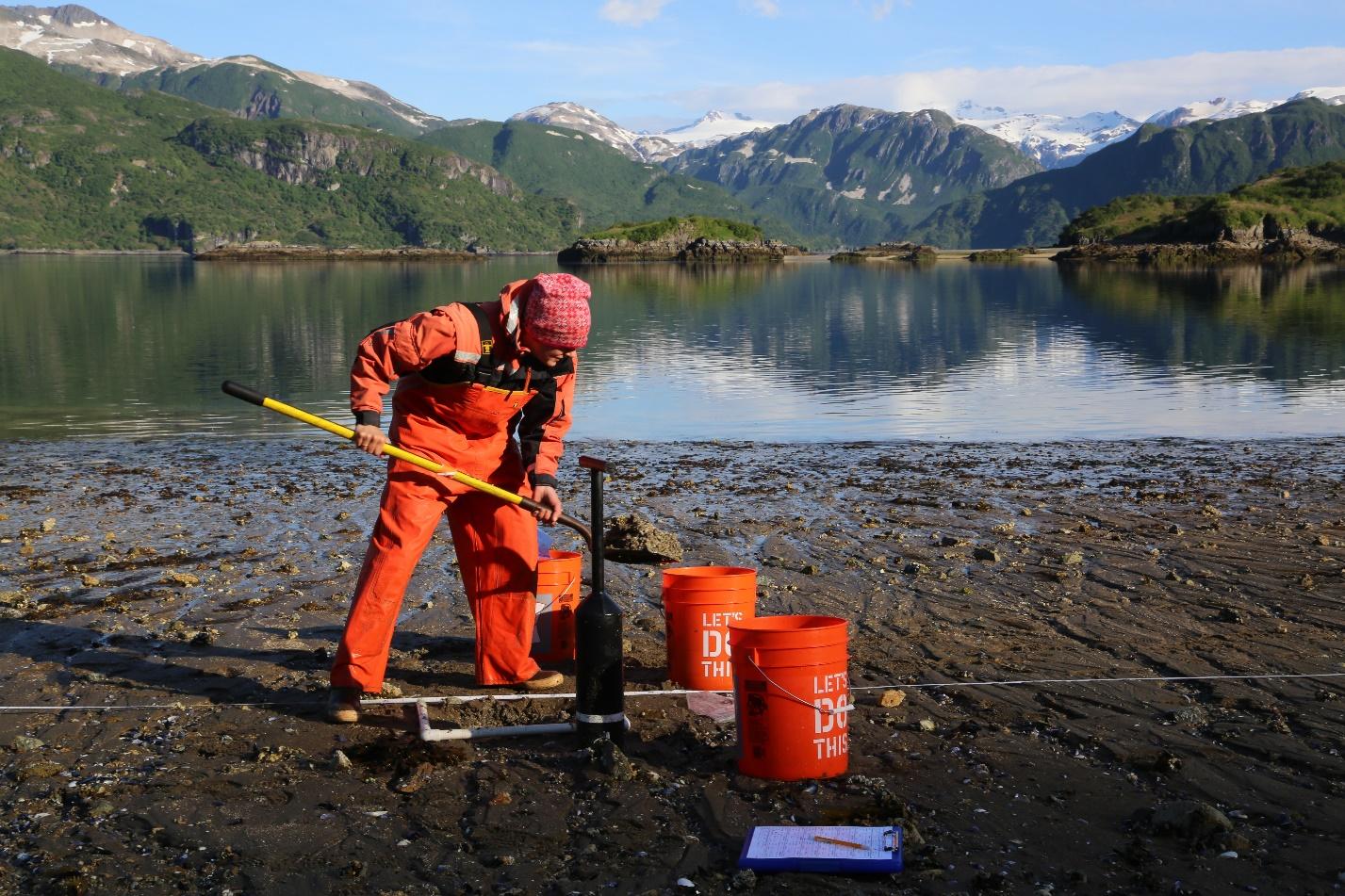Why are we sampling?
Intertidal bivalves, specifically mussels and clams, provide a critical prey resource for a variety of seabirds, marine mammals, fishes, and other invertebrates (e.g., sea stars). They also provide nutrients and energy to some terrestrial carnivores such as black and brown bears that seasonally forage in marine habitats. Bivalves also are important to humans for subsistence and recreational harvest. Mussels and clams constitute a large proportion of the diets of the black oystercatcher and the sea otter, two species that are central in the design of the Nearshore component of the Gulf Watch Alaska Program (see Sea Otters and Black Oystercatchers pages).
Two habitat types are widely recognized as supporting abundant bivalves. The first habitat type is the rocky intertidal that can have dense mussel beds. The second habitat type is soft-sediment (mud to cobble) intertidal beaches that support mussels and populations of several clam species. These clams are ecologically diverse in terms of habitat preferences (some species prefer more muddy/sandy habitats and others prefer cobbles), foraging strategies (e.g., filter-feeding or detritivores), and have a wide range of physiological tolerances. Measurements of bivalve diversity, density, size distribution, and contaminant levels are important for examining small (site to site) to large (among regions) scale variability and changes due to natural and anthropogenic forces. These metrics also provide useful inferences about changes in the environmental conditions as well as causes of change that can be detected in higher-level consumers that occupy nearshore food webs.
Where are we sampling?
We monitor bivalves at specific mussel beds and soft sediment beaches in close proximity to the sites where intertidal communities are monitored in western Prince William Sound (WPWS), Kenai Fjords National Park (KEFJ), Kachemak Bay (KBAY), and Katmai National Park and Preserve (KATM).
How are we sampling?
We sample mussel density, size class distribution, and mussel bed extent at specific mussel beds selected for their high abundance of mussels. We use measuring tapes to lay out transects and quadrats to define the area from which we are sampling. Our methods allow extrapolation of mussel abundance within the entire bed.
Clam species diversity, density, and size class are measured at the 0m tide level. We lay a tape along the 0m contour and then remove all sediment within a 0.5 X 0.5m quadrat, which is sifted to reveal the clams so that they can be identified, counted, and measured.

A SCIENTIST SAMPLES A QUADRAT FOR CLAMS AT A SOFT SEDIMENT SITE IN KATMAI NATIONAL PARK AND PRESERVE. PHOTO CREDIT: JIM PFEIFFENBERGER, NPS.
What are we finding?
From the onset of the Pacific Marine Heatwave (PMH) through 2019, large mussel densities (≥ 20 mm) generally showed positive trends, though the timing varied by region. Beginning in 2022, the Katmai (KATM) region experienced a decline in large mussel density, coinciding with an increase in sea star abundance—a pattern that continued through 2024. In contrast, trends in the other three regions were mixed. Kachemak Bay (KBAY) and Kenai Fjords (KEFJ) had rising mussel densities through 2023, but both saw declines in 2024. The Western Prince William Sound (WPWS) region was the only area to show a positive trend in 2024, marking its first increase since 2018. As ocean temperatures cool, these regional fluctuations suggest that local conditions play a more significant role in shaping mussel abundance in the absence of large-scale events like the PMH.

DENSITY ANOMALIES (DEVIATION FROM THE AVERAGE) FOR LARGE MUSSELS (>20 MM) IN FOUR STUDY REGIONS SPANNING THE NORTHERN GULF OF ALASKA.
Sea star density and species composition have varied significantly by region, with sharp declines observed across all areas from 2015 to 2019—likely due to sea star wasting and possibly intensified by the Pacific Marine Heatwave. From 2021 through 2023, densities remained average to below average, but 2024 marked the first year that all four monitored regions showed positive trends in sea star density, though at varying levels. WPWS and KBAY had slightly above-average densities, KATM saw its highest recorded density since monitoring began, and KEFJ continued a strong positive trend that began in 2022. Species composition also shifted notably in 2024, with regions showing increased diversity. For instance, KEFJ and KATM, previously dominated by Pisaster, saw rises in Dermasterias and Evasterias, while WPWS showed growing numbers of Pycnopodia and KBAY experienced a dramatic shift from Orthasterias to Evasterias dominance. These changes in both density and species composition suggest that sea star populations may be transitioning back to being shaped primarily by local environmental conditions rather than by broad-scale disturbances.

Sea star species composition and density across all four Gulf Watch Alaska regions through 2024: Katmai National Park and Preserve (KATM), Kachemak Bay (KBAY), Kenai Fjords National Park (KEFJ), and Western Prince William Sound (WPWS). Solid horizontal line shows long-term mean total sea star density and dashed lines show standard error. Dashed red line indicates the start and end of the Pacific marine heatwave.



